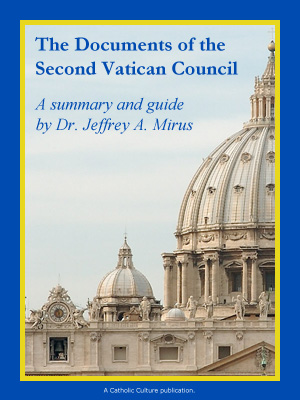Cabrini and the denial that Christ is for everyone
By Thomas V. Mirus ( bio - articles - email ) | Mar 15, 2024 | In Reviews
In a recent interview, Alejandro Monteverde, the director of the new movie Cabrini, defends his work against those who have criticized it for portraying St. Frances Xavier Cabrini as a strong woman and social worker with little to no reference to God, prayer, her religious vocation, or the Catholic faith in general. Expressing his displeasure with those he calls “complainers”, he says, “Well, thank God I’m not making a movie for you.” But it is not Monteverde’s ire that concerns me here; rather, I am troubled by the rationalizations he makes for his decisions, and their implications for both art and evangelization.
Now as I stressed in my review, the problems with Cabrini can’t be laid solely or perhaps even primarily at the feet of the director. This project was conceived by executive producer J. Eustace Wolfington, who in every interview repeats the same story about how this was always intended to be a movie about “a great woman who just happens to be a nun”. (As a 90-year-old Catholic, Wolfington himself may have been formed by the prevailing attitudes in the Church of the 60s and 70s, particularly the mandate to be relevant to the world.)
Thus the agenda was set before screenwriter and director were ever hired. Wolfington’s preconceived notion would, of necessity, have affected even the research stage, blocking new discoveries and adjustments that might have come from a truly open engagement with the historical subject. Therefore, while Monteverde is of course defending his own work as a director, he is also defending the job he was given to do by the producer.
Nonetheless, I would say the following to Monteverde, screenwriter Rod Barr and any other Catholic who made major decisions on Cabrini: It is natural to be upset by criticism of a project you have worked long and hard on. But it is Christian to be open to correction, and if that correction be truthful, to demand more of yourself.
I would say, too: I realize that Catholic artists are often frustrated by a subset of commenters who are high on suspicion and outrage at the slightest perceived deviation, and low on artistic sense and sympathy for the complexities and challenges artists face. So I should emphasize that I care deeply about Catholic artists, that Monteverde is my brother in Christ, and that I want him to succeed.
I write this follow-up to my review, then, not to beat a dead horse, but because I believe Monteverde’s comments, ostensibly defending his artistic prerogatives, are in their real implications discouraging to Catholic artists, leading them to curb their high artistic and evangelistic aspirations and settle instead for a circumscribed, Hollywood-captive vision of what will “work” for a mass audience. Worse, his comments even do a disservice to our Catholic faith. And so I will be frank in examining the many facile assumptions, begged questions and worldly notions put forth by Monteverde in his interview.
Is “the power of a woman’s voice” more catholic than her Catholic faith?
Before getting to the director’s statements, though, it’s worth noting how interviewer Kate O’Hare sets the stage: “The fact that [Cabrini] did this in service of Christ and her vocation is … more implicit than explicit.” O’Hare’s ellipses highlight her generous intent, but it is worth noting that if something is not explicit, that does not mean it is implicit: it could simply be absent, which is closer to being the case in Cabrini. If the movie were simply implicit or vague about Cabrini’s deeper motivations, that would be one thing. But the film is indeed explicit in stating her motives, and as I illustrated in my review, they are to a large extent worldly, not spiritual ones.
Along the same lines, the director uses a hoary writing-workshop cliché to justify downplaying Cabrini’s faith in the film: “It’s show, don’t tell.” Forgive me if I call this a rationalization, seeing that the filmmakers exercised no such restraint when it comes to the film’s girlboss and pro-immigrant themes, which are spoken out loud and often by the fictionalized Cabrini. Indeed, as Paul Kengor points out, they went so far as to invent from whole cloth the film’s villain, the racist mayor of New York, as well as its climactic scene, just so their protagonist could, after putting this non-existent Mayor Gould in his place, turn towards the camera and tell us the film’s principal theme: “Men could never do what we do.”
Monteverde continues:
It’s a film that is not for one audience, it’s for everybody. It’s a universal story. This is a movie about a woman that happens to be a nun, a woman that happens to be the first American saint, but she’s a woman and she is very proud to be a woman.
And she built an empire with women, but she was also an immigrant woman. And that’s where I also connected with her.
She came to this country with nothing but just a couple of suitcases. And she was the first woman to lead a mission outside, an overseas mission, without the leadership of a man. And look what she built.
James Majewski, my co-host on Criteria: The Catholic Film Podcast, pointed out to me that the suppressed premise here is that Jesus Christ is not universal, that He is not for everybody. Incongruously, Monteverde later says the film “was also an opportunity to celebrate the power of the woman’s voice.” But why is “the power of the woman’s voice” more universal than the woman’s relationship with Christ? Is our culture’s inordinate preoccupation with female “firsts” (a preoccupation certainly not shared by St. Frances Xavier Cabrini) more catholic than Catholicism itself? Presenting a little something of Christianity might, it’s true, be a bit more challenging and less safe, artistically and spiritually, for the filmmakers and their audience—it would also be more intriguing and inspiring—but that is not the same as being less universal.
The director continues:
I knew exactly the movie I wanted to make, and I don’t like to make movies to preach to the choir. Those people are already going to church. OK, go.
So I like to make movies that bring people together, and the problem is that the minute we think we live in a bubble, that’s when we kind of exclude everybody else. And Cabrini didn’t do that. She’s a saint.
And:
The works of mercy are in the film. Look, her life is a prayer. So you want to pray, just watch her life. Do 1% of that. That’s her life.
Preaching to the choir: this cliché, too, obscures more than it illuminates. Does “already going to church” mean we don’t need beautiful and truthful religious art—do Catholics not need to be shown, in the stories of the saints, that our good works only have value when done for and by Christ? But if the film is instead intended for non-Catholics, then how can they be expected to read between the lines to see that the works of mercy portrayed in the film are, indeed, spiritual works of prayer? Surely those outside the choir would need even more, not less, explanation. (Of course, even saint movies need not be “preachy”, but artists who wish to portray a Christian subject adequately cannot avoid the necessity of conveying the Gospel.)
Is to specify Jesus Christ (whose name was removed from the traditional Latin table blessing that is the film’s one spoken prayer) automatically to “preach to the choir”? Was St. Paul preaching to the choir when he proclaimed “Jesus Christ, and Him Crucified”? Where did a Catholic artist learn this attitude toward evangelization? Surely it is not the strategy taught by Jesus in the Gospels.
This is not just a matter of evangelization, but of good art. Art, like the Incarnation, connects us to the universal by means of the particular. It is the artist’s task to lead his audience to connect with something outside them, something unfamiliar, and an abdication of that task to give them only what they already know. Monteverde rightly says, “my job as a director was going to be to break any prejudices that come with the character”, but rather than meet that challenge, the makers of Cabrini dodged it by removing most aspects that a modern audience would be prejudiced against in the first place. To do this and then claim to be boldly breaking barriers is an artistic and spiritual cheat.
And after all, if accessibility was the concern, was the task here so complicated? In a movie about St. Frances Xavier Cabrini, just as in her real life and the whole history of the Church, what wins the respect and love of a non-Catholic audience is her self-giving service to the poor. Step one complete; common ground established. Now for step two! Hearts opened by what they can already recognize as good, irreligious viewers will now be less resistant to the film’s portrayal of what is less familiar (but no less universal): her profession of faith in Jesus Christ and the deeper meaning of her vows as a Catholic religious. That’s not enough to make a good movie, of course—there would remain, for instance, the challenge of giving a saint real internal drama (absent in the film we got). But it’s not like they had to figure out how to portray a really unrelatable saint, like St. Simeon Stylites.
When, so to speak, “use words when necessary” becomes in practice “don’t use words because they’re unnecessary”, I have a sense of dawning recognition. Suddenly I am in familiar territory; this is the same misguided strategy that Church leaders have used for the past 70 years as the pews empty, now being marketed as cutting-edge Catholic filmmaking! It’s the same illusion of expedience: de-specify the Faith, focus on social work, and cater to the moral fads of the age. Since this is a period piece about a nun set in a time when nuns wore habits, we see Cabrini wearing one, and the movie even compares it to a suit of armor. Yet if it were set ninety years later, the sort of nun portrayed in this movie would have traded her habit for a pantsuit. Catholic artists like Monteverde and company can and should do better.
All comments are moderated. To lighten our editing burden, only current donors are allowed to Sound Off. If you are a current donor, log in to see the comment form; otherwise please support our work, and Sound Off!
-
Posted by: Thomas V. Mirus -
Mar. 17, 2024 2:08 PM ET USA
Thanks for pointing that out, James.
-
Posted by: james-w-anderson8230 -
Mar. 16, 2024 12:37 AM ET USA
Hi Tom, On a later article "Born in 1851, Rose Hawthorne was raised mostly in Massachusetts. She married George Parsons Lathrop in 1971." That should be 1871.
-
Posted by: jalsardl5053 -
Mar. 15, 2024 6:19 PM ET USA
Correcto, Monteverde, you didn't make a movie for me.
-
Posted by: padre3536 -
Mar. 15, 2024 8:55 AM ET USA
Amen. May Saint Francis Xavier Cabrini intercede for each to become a great Saint Lover of the Beloved!!








